| Srl | Item |
| 1 |
ID:
174481


|
|
|
|
|
| Summary/Abstract |
The United States and the Soviet Union, later Russia, have negotiated limits on their nuclear forces for more than 50 years. Arms control has provided both nations with insights into emerging threats from the other’s forces, allowed informed decisions into the types of weapons and capabilities they could eliminate without risking their security, and maintained transparency and communication with an adversary who could kill millions of their citizens in an afternoon.
|
|
|
|
|
|
|
|
|
|
|
|
|
|
|
|
| 2 |
ID:
142789
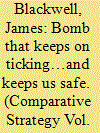

|
|
|
|
|
| Summary/Abstract |
The United States Air Force has returned from its nuclear modernization and intellectual holidays. The B61 Life Extension Program and nuclear capability for the F-35 fighter are at the leading edge of a flight plan that vectors the institution to rebuild the nation's extended deterrent; its two legs of our strategic triad; and nearly all nuclear command, control, and communications infrastructure, to deter emerging nuclear threats and assure allies new and old. This flight plan is framed by new efforts across the cognitive domain of war so that all airmen understand how vastly different twenty-first century deterrence is from the Cold War.
|
|
|
|
|
|
|
|
|
|
|
|
|
|
|
|
| 3 |
ID:
115808
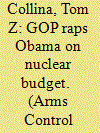

|
|
|
| 4 |
ID:
115754
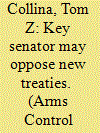

|
|
|
| 5 |
ID:
129107
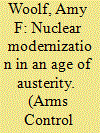

|
|
|
|
|
| Publication |
2014.
|
| Summary/Abstract |
When Secretary of Defense Chuck Hagel spoke about U.S. nuclear forces at F.E. Warren Air Force Base in early January, he emphasized two key points. First, he declared that the United States was "going to invest in the modernization we need to invest in to keep that deterrent stronger than it's ever been." He then added that "we're going to continue to require every element of our nuclear deterrent in the triad."[1] His audience at the Wyoming base might have heard a welcome, if unexceptional, commitment to the future of the U.S. nuclear deterrent, but there could have been more to the secretary's comments. In this period of fiscal constraints and declining defense budgets, many in in the wider policy community are voicing doubts about the ability of the United not only to maintain all three legs of the nuclear triad, but also to replace each leg with new missiles, bombers, and submarines. Although the current debate over the future composition of the U.S. nuclear arsenal often is framed in fiscal terms, it is more about the future need for and role of nuclear weapons than it is about how much money the U.S. government is going to spend on them. Critics of the current plans to modernize the U.S. nuclear force structure argue that the investments are excessive because nuclear weapons are less relevant to U.S. national security in the 21st century than they were in the past. Supporters argue that this investment is necessary because nuclear weapons continue to play a critical role in U.S. national security. Regardless, if defense budgets continue to decline in the coming decades, the country may face difficult and possibly illogical trade-offs as it pays for the rising cost of nuclear modernization. The United States deploys strategic nuclear warheads on three types of delivery vehicles: long-range, land-based intercontinental ballistic missiles (ICBMs), long-range submarine-launched ballistic missiles (SLBMs), and long-range heavy bombers based in the United States. Each of the delivery systems in the U.S. nuclear force is aging, and all could reach the end of their service lives in the next 30 years. The warheads that these systems would deliver also are more than 25 years old and contain aging components that may raise questions about their reliability in the future
|
|
|
|
|
|
|
|
|
|
|
|
|
|
|
|
| 6 |
ID:
174745


|
|
|
|
|
| Publication |
Oxon, Routledge, 2020.
|
| Description |
xviii, 203p.hbk
|
| Standard Number |
9781138350557
|
|
|
|
|
|
|
|
|
|
|
|
Copies: C:1/I:0,R:0,Q:0
Circulation
| Accession# | Call# | Current Location | Status | Policy | Location |
| 059914 | 355.825119/WAR 059914 | Main | On Shelf | General | |
|
|
|
|
| 7 |
ID:
146752
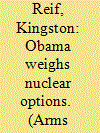

|
|
|